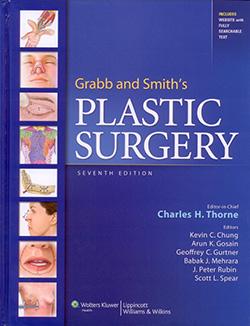
A facelift is a gold standard for rejuvenation of the aging face against which any other treatment must be compared. A properly performed facelift is the single most beneficial, long-lasting, and, considering it can be a substitute for a decade of less invasive treatments, cost-effective treatment available for the aging face.
But not all facelift surgeries are as successful as the patient or surgeon had hoped. Truly botched facelifts are rare these days as surgeons receive better training than ever before and the surgical techniques have become more dependable and standardized. Most problems after facelifting are minor. The most common “complication”, like after any cosmetic procedure, is a situation where the patient looks better than before surgery but does not feel that he/she has achieved the improvement he/she was seeking. In other words, the surgical result fell short of the patient’s expectations. In rare cases, there are more serious complications that patients may put in the “botched” category, whether it was in fact the surgeon’s fault or simply an unpredictable complication.
Signs of a “Botched” Facelift
Some of the imperfections about which patients may be unhappy after facelifting are:
Pulled Skin
The facelift surgery should ideally gently lift the facial tissues into a more youthful position in a harmonious fashion, without placing any unusual tension in one area. If the tissues are not redraped naturally, the face may look pulled or strange. If you lie flat on your back and hold a mirror up in front of your face, THAT is how you should look after the facelift procedure. You can see that the gentle force of gravity has repositioned your jowls naturally and you do not look pulled. An experienced surgeon can usually reproduce that natural appearance through surgery.
Scars
The incisions for facelifting usually heal in an almost imperceptible fashion so that the scars are almost invisible. The key is trimming the skin so there is no tension on the closure. If that principle is not followed, then the scars can be more visible and may distort anatomies such as the sideburn or earlobe, or hairline. In rare cases, the surgeon can do everything correctly, and still some patients from unsightly scars. So bad scars are not always anyone’s fault.
Unnatural skin redraping
When the skin is elevated and redraped on the face, the direction of the pull must be correct or it can create a bizarre effect. Some patients have many aging creases in the neck and if the skin is redraped too vertically, these creases can be redraped onto the cheek creating an extremely noticeable and unnatural situation.
Altered Hairline/earlobes
As mentioned above, the incisions and the closure must be planned so that the sideburn, tragus of the ear, earlobe, and hairline are left in their original natural positions and not distorted. Distortion of these natural landmarks can create a look that is visible from across the room and is highly undesirable.
Can Botched Facelift be Fixed?
Most unhappy facelift patients can be improved significantly but it requires a surgical revision which they didn’t plan for, costs money, and requires another recovery. As a general rule patients will want treatment immediately but it is almost always better to wait for several months or longer. Patience on the part of the surgeon and the patient is almost always rewarded in these circumstances.
The other technique that can be extremely helpful is fat grafting. In some cases, the aging face has simply had too much fat removed or has been pulled too tight. Often injection of fat from the patient’s abdomen or flanks can soften the appearance dramatically.
Talk to a Plastic Surgeon
Your facelift treatment wasn't a success? Get some good advice. Talk to board-certified plastic surgeon Dr. Charles Thorne to explore your options. Dr. Thorne has extensive experience in all plastic surgery procedures, including the care of patients who are not completely happy with their facelifts.
Schedule a virtual consultation with Dr. Thorne now!

Dr. Thorne is the Editor-in-Chief and the author of several chapters in Grabb and Smith's PLASTIC SURGERY, 7th Edition.
